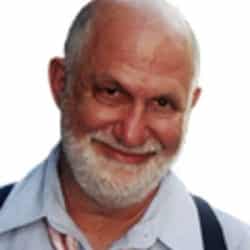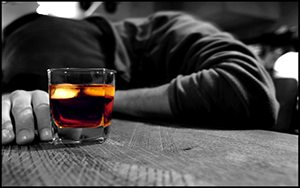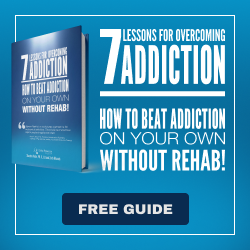Alcoholic Denial – Can it Help You to Recover?
Acknowledging your addiction problem is the first step to recovery, you will hear. But evidence shows that being saddled with an “addict” identity often harms people.
Chris drank recklessly throughout his 20s, often getting black-out drunk several times a week. One morning, in his mid-20s, he awoke after a particularly bad bout, horrified by what he could remember and how he felt, and terrified at the thought of what else he might have said or done. He started searching online for a local AA chapter—but then halted. “What am I doing?” he thought. “I’m no alcoholic.”
Right there, we recognize the narrative of the alcoholic “in denial,” the one who inevitably goes on to ruin and death.
But as we shall see, the evidence is clear that for people with addiction problems, identifying as an alcoholic or addict more often has an adverse effect than a positive one. Chris’s decision that morning probably saved him a great deal of suffering. Yet the denial-is-bad meme dominates our cultural perception of addiction.
Twelve-step Recovery Dominates the Narrative, Natural Recovery Dominates the Numbers
George Vaillant’s highly touted 1983 book, The Natural History of Alcoholism, followed the lives of men in two groups, one working-class (largely Italians and Irish), the other upper-middle-class Harvard students, for decades. He found that a decisive majority of alcoholics in both groups achieved remission on their own.
When I reviewed Valliant’s book for the New York Times Book Review I wrote, “The cases [Vaillant highlighted] belie the complexity of his research by emphasizing with monotonous regularity the need for an alcoholic to acknowledge he has an uncontrollable disease and to seek redemptive treatment for it.” That is, every person Vaillant (who went on to become a national board member of AA) describes in his examples either entered AA and recovery or else, if they failed to do so, ruined their lives with their drinking.
These narratives are par for the course. You are simply not “allowed” to describe a person who avoided treatment and AA and who survived, whether they reduced or eliminated their drinking or drug use. What is most challenging for Vaillant and the AA viewpoint is when these people reject the idea that they are fundamentally alcoholics or addicts.
This rejection of an addict identity applied to the former Chancellor of Schools for New York, Joseph Fernandez, for example, who quit his youthful heroin habit before achieving prominence, but was fired for discussing his drug use in his memoir. Fernandez didn’t call himself an addict.
Likewise, Ron LeFlore, an all-star center fielder for the Detroit Tigers who learned to play baseball in prison, used drugs as a teenager and took heroin and cocaine combinations daily for nine months before he was arrested for robbery. But he, too, decided he wasn’t really an addict.
Let’s return to Chris. Despite his seemingly having “hit bottom,” he continued drinking at more or less the same level. But as he entered his late 20s, his life gradually changed. He met the woman he married, settled into work he liked and made peace with his parents. He also began going out less, quit hanging out so often with heavy-drinking cronies and more often drank without getting drunk.
Years later, now a moderate drinker, Chris went with a friend to an AA meeting. He was struck by how much the first halves of the stories he heard resembled his own early drinking. “I could be one of these people,” he thought, “stuck in this world of alcoholism and recovery.”
What are we to make of Chris’s story? If you don’t follow the recovery narrative, your sobriety is questionable. A recent New Yorker interview with Billy Joel, deconstructed here, noted that Joel “rejects the AA approach and favors the kind of self-moderation that AA’s devotees cluck at.”
Yes Chris is typical. Reviewing the research on addiction and alcoholism that comes from the massive NESARC study of people’s life-time drinking and drug use, the highly respected British “Drug and Alcohol Effectiveness Bank” observed (in its October 30, 2013 bulletin):
“Why is addiction so often seen as a chronic disease? It could be because most of the studies and most dependent users who come to light derive from treatment services. Findings from the largest ever US national survey of drink and drug problems show that outside the clinic, remission was the norm.” [My emphasis.]
NESARC questioned 43,000 randomly selected Americans, compared with studies of treated alcoholics or addicts which rarely number more than a score or two of subjects. The NESARC subjects were asked how they drank or used drugs at the most extreme point in their lives, and about their drinking and drug use in the past year.
Like Chris, they detailed their worst substance problems. Then they usually described their current moderate consumption—the most common outcome with alcohol—or, with cigarettes or other drugs, usually but not exclusively abstinence. But subjects like these who overcome substance problems rarely define their younger selves as addicts or alcoholics, or even acknowledge having had a problem!
Is this a coincidence? Or is refusing to define yourself as addicted in itself a key step that enables you to move on? Put another way, what are the costs of assuming the addict/alcoholic identity—including hindering, actually forbidding, you from becoming the person you would otherwise evolve into?
Compulsive Gambling: The Same Story???
To help us answer that, let’s take a look at a non-drug addiction. NESARC also asked about compulsive gambling. Wendy Slutske, at the University of Missouri, analyzed gambling in NESARC.
First, Slutske noted, “Pathological gambling is described in DSM-IV as a chronic and persisting disorder.“ (Now, in DSM-5, such gambling is reckoned an addiction.) In reality, Slutske found, “A substantial portion of individuals with a history of pathological gambling eventually recover, most without formal treatment.” Why does that sound familiar?
What about “controlled gambling”—that is, recovering without abstaining? Slutske conducted another study in Australia. “In this general population survey, nearly all the pathological gambling recoveries were achieved in the absence of abstinence. Controlled gambling appears to be a popular road to recovery in the community.”
Slutske also conducted a longitudinal study of college freshman who were followed for 11 years and had their gambling assessed at four different points. “The most typical course of problem gambling across the four waves of this study was diagnosing at only a single time point rather than at multiple time points.”
This research found that people moved into and out of compulsive gambling so rapidly that such an addiction is the description of the young person at a particular point, and not a label designating who the person is.
Perhaps you would object that DSM has now mislabeled gambling as an addiction. Instead, stepping outside the boundaries of substance use makes it easier to recognize what is in fact the typical addictive pattern. As the NESARC researchers noted: “In most persons affected, alcohol dependence (commonly known as alcoholism) looks less like Nicolas Cage in Leaving Las Vegas than it does your party-hardy college roommate or that hard-driving colleague in the next cubicle.”
Alcoholic or Addict: Who, Me?
Are we missing the forest for the trees? That is, how do most addicted people who don’t receive treatment—that is, most addicted people—recover? And how do they view their recovery process?
In 1999, I participated in a conference in Switzerland for natural recovery researchers. (George Vaillant was also a part of this group of around 15.) University of Calgary psychologist David Hodgins described a study he conducted of people who had indicated in their responses to a scale of items in a survey that they had been compulsive gamblers, but no longer were. When Hodgins contacted these individuals for interviews, however, the “vast majority” denied they had ever had a gambling problem!
Hodgins thought that perhaps the original designation that these had been compulsive gamblers was mistaken. But Slutske’s study that followed people over years revealed that rapid shifts into and out of gambling problems are normal. So what Hodgins may simply have uncovered is that people avoid thinking of themselves as addicts…and most often this works for them!
The Benefits of Denial
Chris’s recovery was a) the way that most people go, and b) left him unencumbered with an identity as an alcoholic/addict. It did take him a number of years to mature out—social researcher Charles Winick’s term for natural remission from heroin addiction. But the advantage is that he is now a free man, able to lead a fully realized social, professional and personal life.
Winick identified this natural recovery process in 1962. Based on narcotics users in treatment, Winick noted, “there has been considerable acceptance in both lay and professional circles of the thesis that many addicts never stop using drugs, but continue as addicts until they die, except for unsuccessful attempts at withdrawal or for periods of enforced abstinence in jails or hospitals.”
Instead, scouring government records, Winick found that perhaps two-thirds to three-quarters of people with heroin addiction do recover, although it often takes a decade or more. Winick concluded that the minority who don’t mature out “decide that they are hooked, make no effort to abandon addiction, and give in to what they regard as inevitable.”
Several British studies have shown that outcomes for alcoholic drinkers depend on how they conceive of themselves and alcoholism. Jim Orford and Alistair Keddie found that patients’ “persuasion” that they could achieve controlled drinking or abstinence was most important for the outcome actually achieved. Nick Heather and colleagues found that drinkers who rejected the axiom “one drink, one drunk” were more likely than those who accepted it to drink moderately after treatment, no matter what their level of dependence.
Also in the UK, sociologists have investigated the need for addicts to create new identities in order to overcome their addictions. The title of one such study is “Addicts’ narratives of recovery from drug use: Constructing a non-addict identity.” In 2011 I debated the co-author of this research, Neil McKeganey, in Scotland. I emphasized harm reduction, while McKeganey pressed for abstinence. Nonetheless, the difference between the US and UK is indicated by Neil’s use of the word “recovery” as a conclusive state of being, not a tentative one that an addict must forever work at “one day at a time.”
Traditional American recovery advocates hold that even if these individuals can quit their addiction, they are still addicts: their identities cannot change. As Ilse Thompson and I emphasize in Recover!, going this route means that you are convinced that you are an addict or an alcoholic and conform to that role. You can never escape your disease. For Ilse and me, the best—and most common—route to recovery is growing into a non-addict life that allows your identity to evolve.
Those who escape the addict identity—or people like Chris and the recovered gamblers Slutske and Hodgins studied who refuse to take on this identity at all —often have the freedom to become like those they see drinking around them at a restaurant with spouses and friends, or to spend an evening playing cards or at a casino without going hog wild.
Inculcating an addict identity prematurely, on the other hand, as the burgeoning recovery high schools and college recovery dorms do for teens and 20-year-olds, is the best guarantee that people won’t attain that freedom. How would following such a path have impacted those 20-somethings in the NESARC study who time proved were like the “party-hardy college roommate” who then settles down?
Too often, we teach exactly the people most likely to outgrow addiction to see themselves as addicts who must live walled-in lives forever. This process seems guaranteed to short-circuit growth out of alcohol and drug dependence.
Is this really the advance in recovery that addiction advocates claim? I call this early-age labelling the “Invasion of the Body Snatchers.” Here is one “coming-out-as- addict narrative” from a 21-year-old which, typically, the interviewer praises to the sky:
“You were the first-ever president of the student recovery group at Penn State University,” I said to a woman I’ll call Sarah. “That meant you were one of the first people to talk publicly about your own addiction in a university with almost 100,000 undergraduate students. And you were only 21 years old. How did that feel?”
She was surprisingly blasé. “I kinda compare it to coming out [as gay]. I came out in high school and there was nobody else then, either.” I considered the comparison for awhile after we spoke, thought it was a good one. A few weeks later, I learned that October 11 was National Coming Out Day.
The best known book about a high-school and college-style alcoholic is Koren Zailckas’s Smashed: Story of a Drunken Girlhood. Zailckas describes a girlhood from 16 on where she was regularly—sometimes it seems perpetually—drunk.
Zailckas quit drinking after college, but she didn’t go the recovery route and refuses to call herself an alcoholic. The result is antagonistic reviews of her book like this one on Amazon: “She is so obviously an alcoholic that she really does a disservice to other young women reading this book because she leads one to believe that AA is not necessary.”
People tell us such stories all the time. We have recounted the narratives of Fernandez, LeFlore, Joel, Zailckas, Chris and Hodgins’ subjects (incidentally, these individuals represent Latino, African-American, Jewish, Lithuanian-Sicilian, and Anglo ethnics, a sampling of world cultures). We just refuse to listen to them!
Of course, there are people for whom this outgrowing might never happen, or would be a long-term, precarious struggle. But this group of persistent (NESARC calls them “chronic”) alcoholics and addicts is far smaller than assumed. One person who believes he is such an irresolvable case is the drug czar, Michael Botticelli. He has every right to make this decision. But, more often than not, people who reach this conclusion are wrong: They are in denial.
Conclusion
So, when someone says: “The first step in recovery is to acknowledge that you have a problem and that you’re an alcoholic or an addict,” your answer should be, “That’s simply not true—and making that decision might haunt the rest of my life!”
You might say, “I’m not telling you what you should do. But I am, nonetheless, reserving the right to be me.” As Zailckas put it, “That identity didn’t feel true to me, so I didn’t write it. I also think the brand ‘alcoholic’ prevents a lot of people, especially young people, from seeking (non-AA) help or even reevaluating their relationship with alcohol.”
If you feel that you are capable of dealing with your problem yourself, without entering addiction treatment or joining a support group, pursue that path. You do so by living your life fully while protecting yourself and those around you, holding yourself accountable, but not encumbering yourself with superfluous, negative presumptions about who you are.
If you are encumbered by such a negative, addict identity, don’t lose heart. There are ways to get rid of that identity, and I intend to write about them soon.






